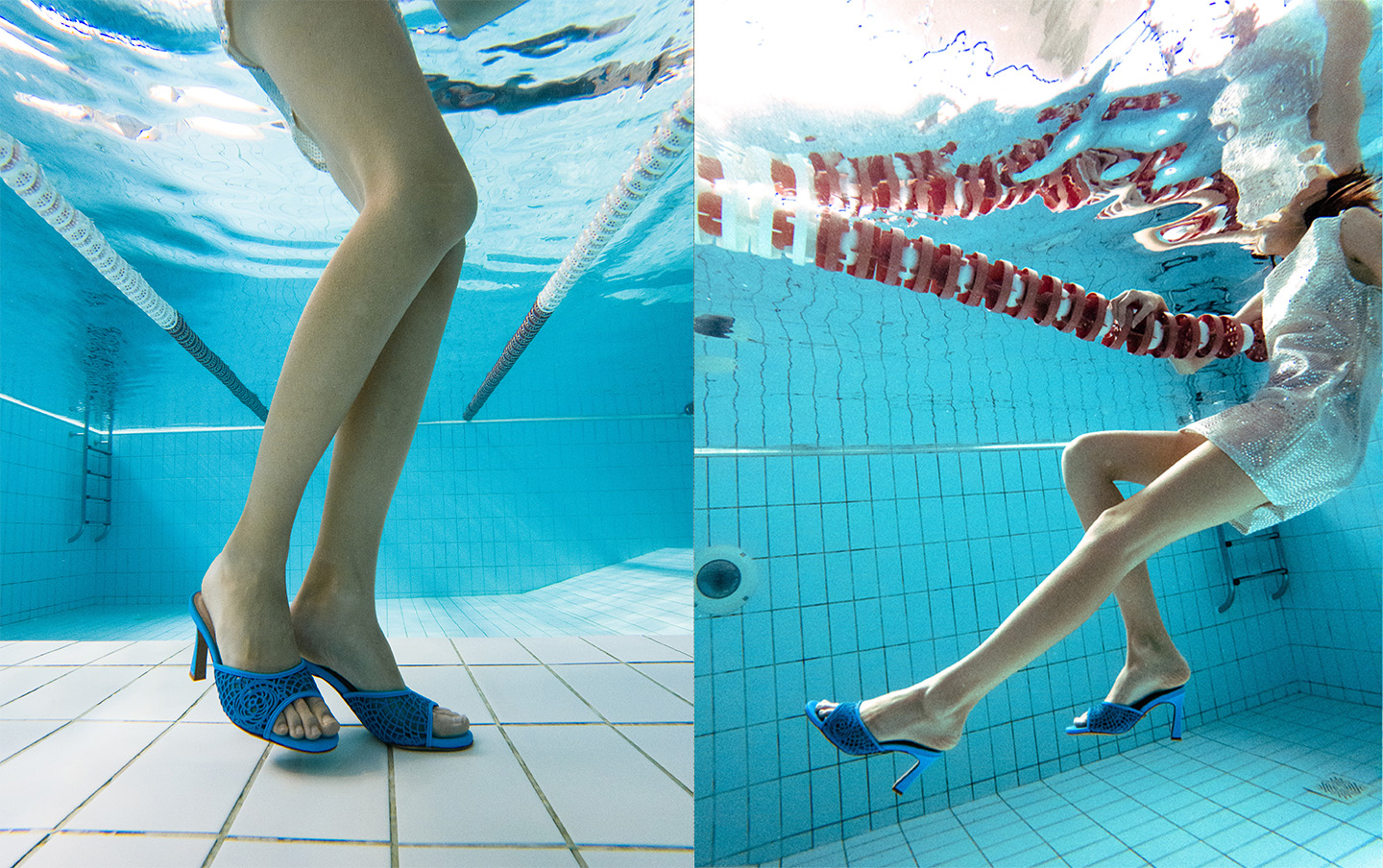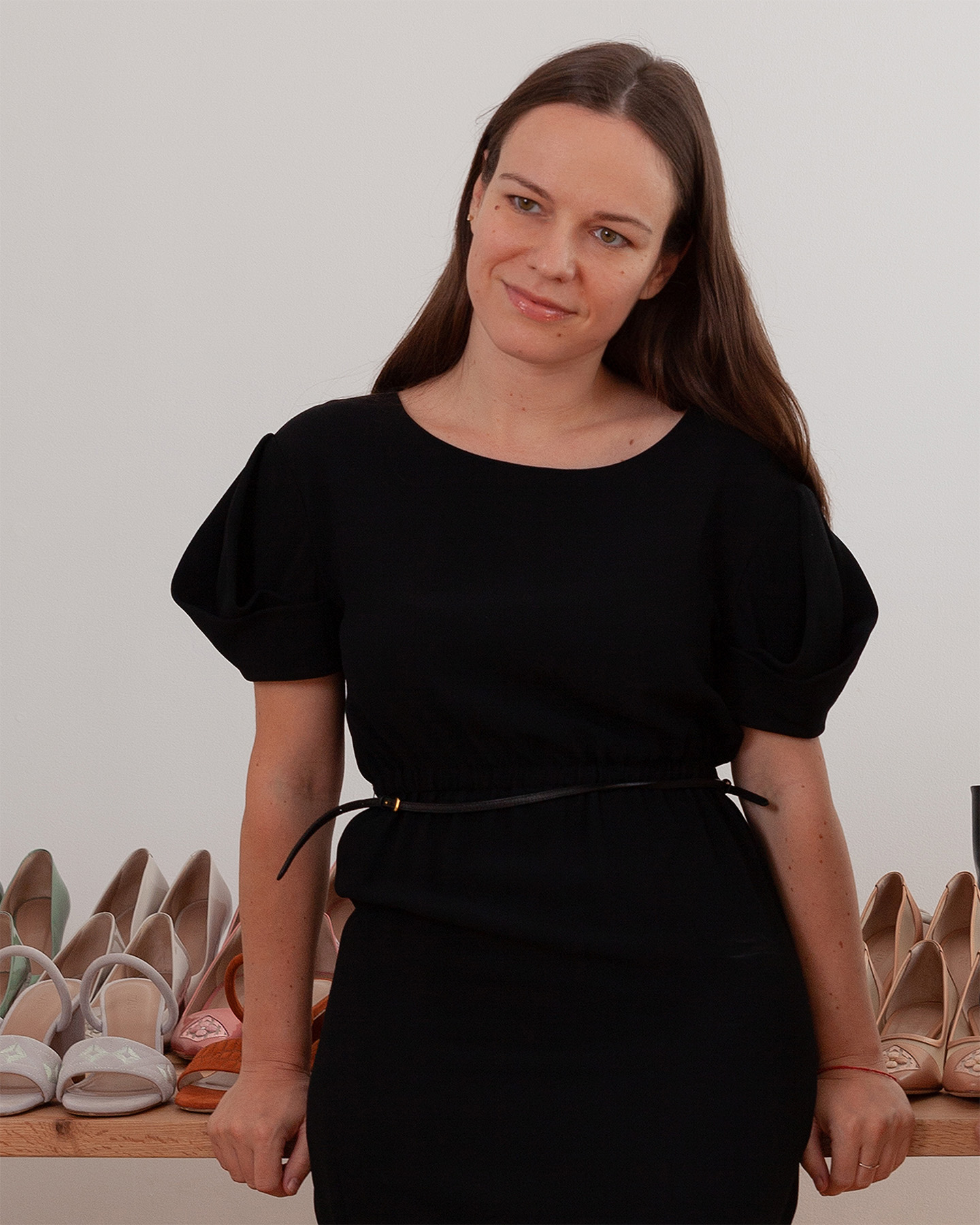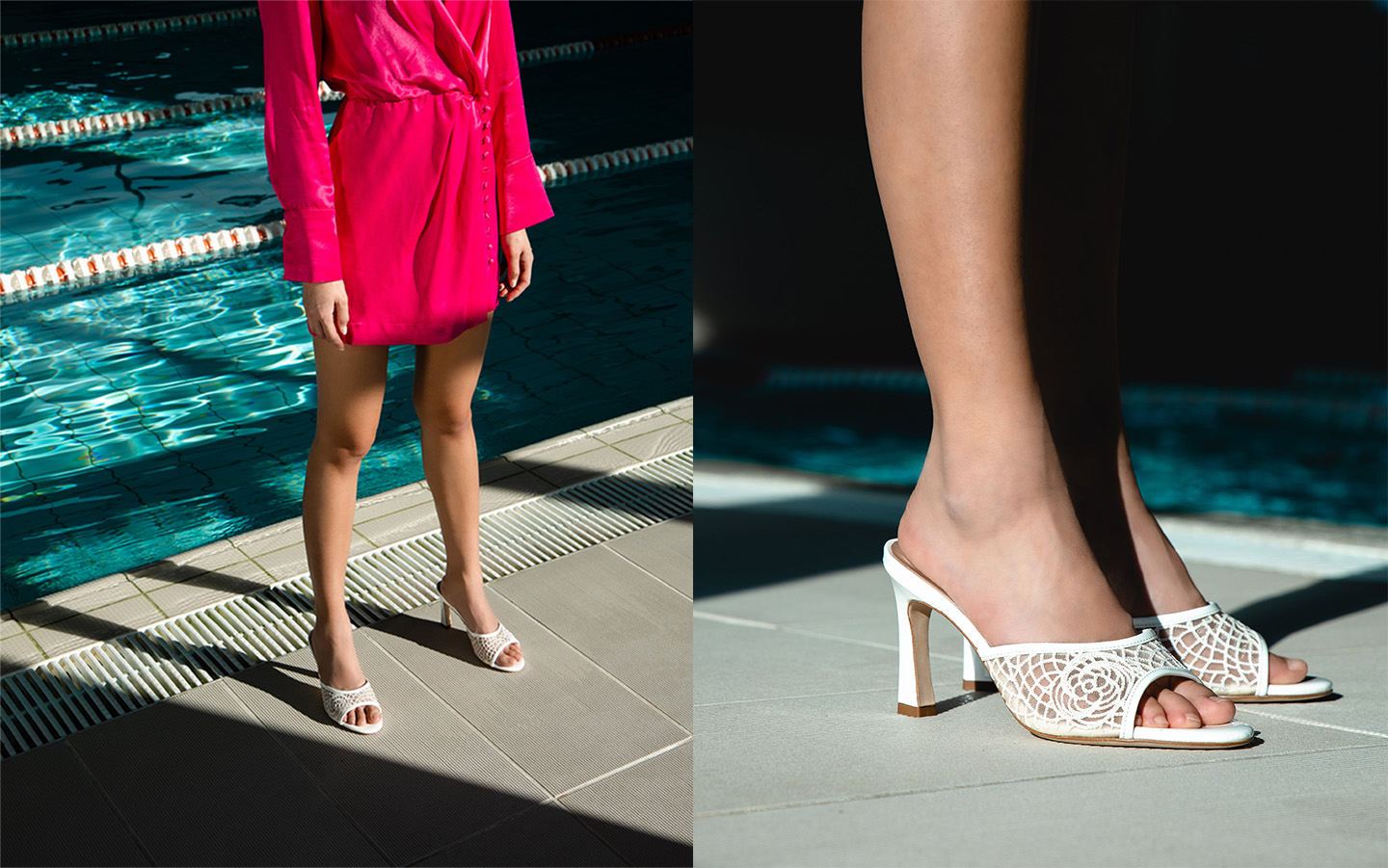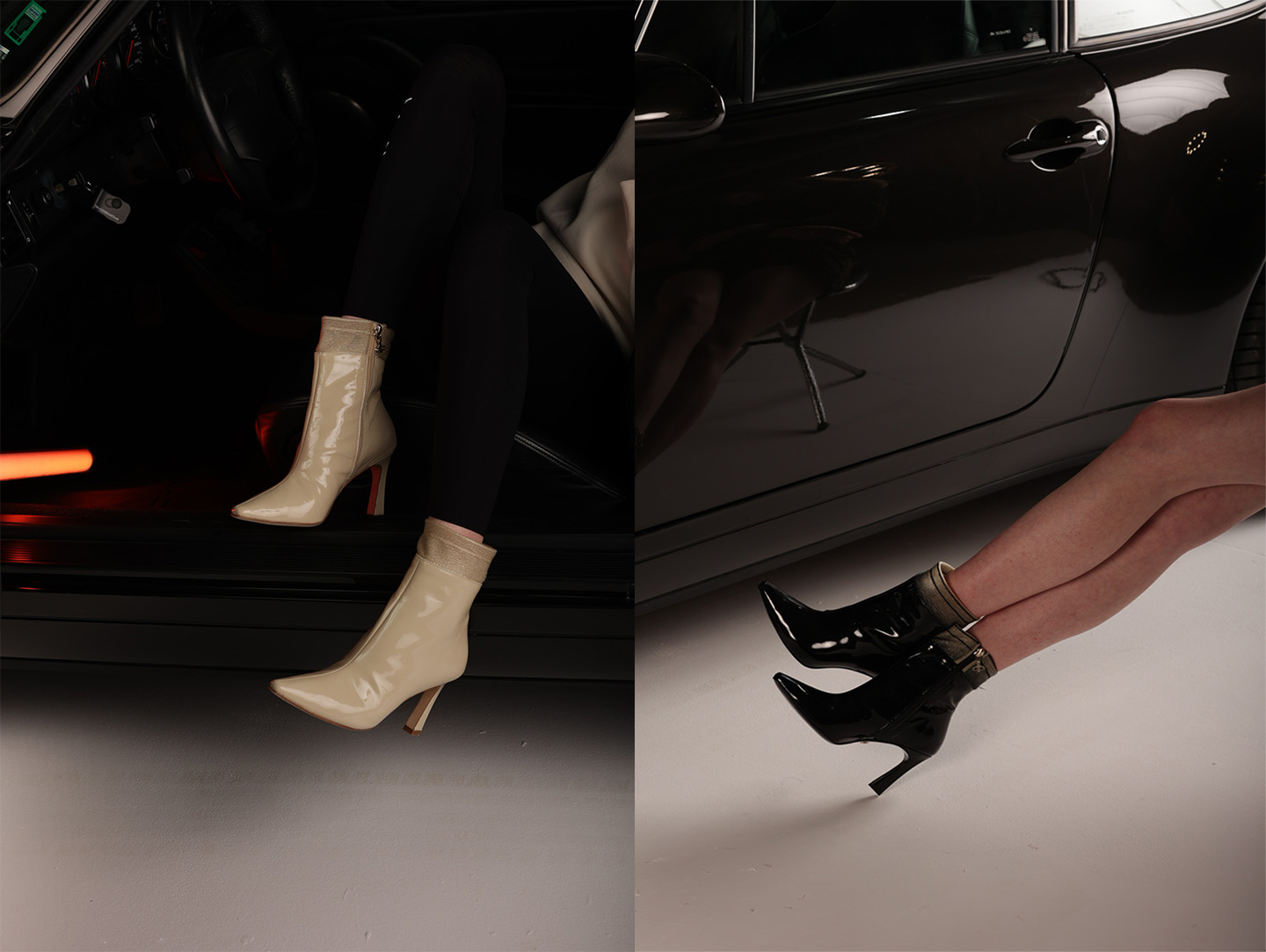

“Embroidery design takes technique, attention to detail and creativity to bring it to the next level as a modern-day textile.” When Istituto Marangoni London alumna, Aneliya Kyurkchieva, talks about embroidery, her eyes light up.
After graduating in Fashion Design at Istituto Marangoni’s London campus, Kyurkchieva worked as an embroidery designer at Alexander McQueen in London for over five years, joining both the Women’s and Men’s teams. Then the urge to create her own design concept of a new take on the traditional embroidery craft finally came to life with the launch of the ATANA shoe brand in 2020.
“Starting a business during a pandemic has been challenging,” said Aneliya Kyurkchieva. But she was not alone: by her side was her sister Tanya, who worked as an investment banker in London and is currently the CEO of ATANA.

ATANA co-founders Aneliya and Tanya Kyurkchieva
With this family-run business, Aneliya Kyurkchieva, creative director of ATANA, has thus managed to bring into play all the experiences she gained at school and the focus on storytelling, design authenticity and craftsmanship that she learned at McQueen’s.
We caught up with Aneliya Kyurkchieva to get the challenges behind launching an independent brand during the pandemic and everything you still don’t know about ATANA shoes making embroidery a wearable art on your feet. Read how he succeeded in bringing back “an old craft like embroidery as an everyday go-to fashion item.”

ATANA's Crochet mule. The embroidery recreates the handmade effect of traditional crochet techniques by using rich and raised embroidery while the sheer mesh
Your brand incorporates traditional artisanal embroidery within all its pieces. Where does this love for embroidery come from?
I developed a flair for handcrafts at an early age, being influenced by generations of women in the family who spent their past time embroidering and knitting. It wasn’t until my internship in the Embroidery Department at Alexander McQueen, however, that I discovered my true passion and career path in embroidery. Embroidery design takes technique, attention to detail and creativity to bring it to the next level as a modern-day textile.
How did your path while studying at Istituto Marangoni shape your perspective as a designer? What do you remember from those days?
Istituto Marangoni played a major role in shaping my perspective as a designer. It was a place for hard work but also endless inspiration. I remember being in awe by the impressive creative spaces as soon as I walked into the London campus. I spent many hours developing and refining my skills there within a strong community of tutors and peers. It was these relationships that really helped me find my path within fashion design. Upon graduation I stayed in touch with my tutors who supported me throughout the portfolio preparation process with job applications. It was also thanks to Marangoni career services that I was informed about an internship opportunity with the Embroidery department at Alexander McQueen which ultimately lead to my first full time job there and a 5-year long career with the brand.

ATANA Fiorellini pumps
ATANA focuses on craftsmanship and timeless quality. Do you think your background in luxury guided your decision to steer away from mass production and trend-driven design?
Definitely! Working at Alexander McQueen for several years was so much about storytelling based on the brand’s heritage and representing our expression in the fashion industry. So naturally, with ATANA I aspired to create a unique, feminine product that transcends trends, is of very high quality and is responsibly made. It was also important to bring back an old craft like embroidery as an everyday go-to fashion item. I want to motivate our customers to invest in quality fashion, which thrives on storytelling, authentic design and craftsmanship.

Istituto Marangoni London alumna Aneliya Kyurkchieva
How did Istituto Marangoni prepare you for your role as an independent designer?
During my MA in Fashion Design, we were mentored by outstanding tutors and had regular visits from people in the industry, to name a few Burberry, Stylesight, Richard Nicoll and others. It was insightful to hear their project briefs and evaluation as this was a clear reflection of the expectations in the industry. I really appreciated the opportunity to learn and prepare for a working life as a designer with a well-rounded skill set. I feel that as an independent designer you need to be equipped by a lot more than a creative mind, but also the ability to transform your concepts and ideas into a working business.

ATANA's Crochet mule
ATANA was born during the worldwide COVID-19 pandemic. This must have led to additional challenges you had to overcome quite quickly. Could you tell us a little more about that journey?
Starting a business during a pandemic has been challenging. In March 2020, when the first lockdown took place, I was looking for inspiration and to define ATANA’s brand identity. Normally, I would visit galleries, vintage markets, and libraries, but resources were limited at the time. I ended up arranging one-on-one meetings with vintage textile traders in Bulgaria in parks who would show me and tell me more about traditional textiles. These ended up being the core inspiration behind ATANA’s first collections. Other challenges, like multiple factory and supplier closures and Corona outbreaks, meant that it took us 1.5 years to develop the final samples of our first collections.
You started your business with a partner. Has that made a big difference in your experience? How did the partnership come about?
I established ATANA in 2020 with my sister Tanya. As sisters, we were raised in an entrepreneurial family, so ATANA was a shared dream for quite some time. It took a global Pandemic to eliminate distractions and help us focus on making it a reality! Our careers before ATANA took us in very different directions, but we always felt our brand and business would bring them back together. Tanya’s experience is in finance and investing; it has been so valuable to have a cofounder with a complementary skillset to mine, which is entirely creative.

ATANA boots
I am sure you have learned many new skills over the last two years during this enterprise journey. What would you say has been the most challenging aspect of running a business (and coming from a creative background)?
It has been challenging to turn off my designer mind and start looking at ATANA not just as a creative expression but also as a business. We are a two-women show, so we have to multi-task and take on so many roles that we haven’t had before. For me, one of the hardest things has been to understand social media nowadays and the specifics that come with it. We are not a trend-driven brand, so finding our place on these platforms was challenging. I feel that now we understand our customers better and can improve our communication with them, but as with everything else, this takes time.
What’s next for ATANA and, of course, yourself?
Building ATANA from the ground up has been an exciting journey so far. It takes a lot of determination, passion, and persistence to make a brand a reality. We are still a very young brand, so I am excited and curious to see where this journey takes us. I would love for ATANA to reach more people and gain more exposure with time. Our shoes are a labour of love, and the feedback we have been getting so far has been highly encouraging and motivating. I would love to stay on course, dedicate even more time to the creative processes and build a creative team. I genuinely love what I do.
Charlotte Valkeniers
Editorial team, London


